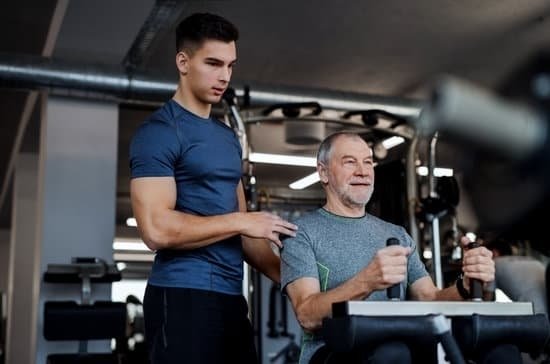Introduction
The Athletic Personal Trainer Certification post covers the information needed for individuals interested in becoming certified to help others reach their health and fitness goals. This post will provide readers with an overview of the certification requirements, successful strategies and tips for those trying to attain a personal training credential, as well as frequently asked questions about the certification process. The benefits associated with obtaining a personal trainer certification are also discussed. Ultimately, this post is designed to give readers all the information they need to obtain and maintain a professional fitness certifications that can help them launch and advance their career.
Benefits of Athletic Personal Trainer Certification
Athletic personal training certifications are important for those seeking to work in the health and fitness industry. There are several different types of certifications available such as Certified Exercise Physiologist (CEP), Athletic Training Specialist (ATS), Certified Strength and Conditioning Coach (CSCS) or American College of Sports Medicine (ACSM).
Each of these have their own functions and specialize in different areas, however all provide a level of competency and knowledge when it comes to working with athletes. By obtaining one of these certifications, potential candidates are able to show prospective employers that they possess not only a basic understanding but the requisite expertise in this specific field, setting them apart from other applicants.
In addition, having an athletic certification may qualify individuals for higher paying job opportunities, give insight into new techniques and fitness methods, as well as provide access to continuing education courses – further helping enhance career prospects. It is also important to note that many healthcare organizations require some kind of certification for their staff members in order for them to be hired; hence having an athletic personal training certification can prevent missing out on important career development opportunities.
Types of Athletic Personal Trainer Certifications
1. Certified Strength and Conditioning Specialist (CSCS) – This certification, offered by the National Strength and Conditioning Association (NSCA), is a comprehensive demonstration of training knowledge and experience. Requirements include: a bachelor’s degree in exercise science or a health-related field, two letters of reference from an NSCA professional, a 250 hour field experience requirement, attendance at all four days of the CSCS exam workshop, successfully passing all parts of the CSCS exam.
2. Certified Personal Trainer (CPT) – This certification is offered by both the American College of Sports Medicine (ACSM) and The National Academy of Sports Medicine (NASM). Requirements for ACSM include: successful completion of a Bachelor’s Degree in Exercise Science, Human Performance or another related field, submission of two letters of recommendation from ACSM professionals and the successful passage of both written and practical components on the certification exam. For NASM, requirements include: achieving six semester credits in anatomy and physiology; possessing current CPR/AED certifications; obtaining four hours of formal credential review/preparation coursework/study materials and passing both a written theory portion as well as a simulated personal trainer assessment.
3. CrossFit Level 1 Trainer Certificate – To receive this certificate, candidates must complete an online seminar detailing CrossFit methodology as well as attend an official training workshop hosted by any CrossFit affiliate gym. Once each requirement has been met candidates will then have to pass an assessment test showing their understanding of nutrition and physical fitness principles associated with training athletes through CrossFit methodology.
4. Performance Enhancement Specialist Certification (PES) – Offered by NASM this certification requires individuals to have first completed either their CPT or CPT-GFI programs before applying for performance enhancement specialist status; once completed individuals must then submit two letters from past clients endorsing their performance capabilities before taking the PES written examination.
How to Get Certified
To become certified as an athletic personal trainer, you’ll need to complete the following steps:
1. Acquire an appropriate degree. You must have a degree in either exercise science or physical education from an accredited college or university in order to be eligible for certification.
2. Find an Athletic Training Organization (ATO). Look for ATOs that are affiliated with your state’s sports association, as these meet specific professional requirements. Obtain your certification through the ATO that best suits your needs and particular area of focus.
3. Participate in continuing education courses. Most ATOs require their members to have a certain number of “continuing educational units” (CEUs) each year. Start by researching what courses are necessary to maintain your certification and begin taking them once they become available near you.
4. Take the written exam and pass it with high scores on a first attempt basis in order to obtain your athletic personal trainer accreditation certificate and eligibility status into the ATO under which you completed all requirements of certification. The exam will include questions regarding safety issues, basic anatomy, nutrition fundamentals, physical assessment skills and problems solving abilities related to athletic training settings; however, details vary between organizations so make sure you research what’s needed before taking it.
5. Gain hands-on experience working with athletes under supervision from qualified trainers or health professionals who have experience working athletes at all levels of competition and performance ability levels. Some ATOs require candidates to gain certain amount of hours of hands-on experience over a defined time period prior to becoming fully certified; therefore, ensure you meet such criteria if applicable for the organization with which you apply for certification.
6. Once all requirements have been met and employment application has been approved/accepted by an approved facility or center offering quality support athletes/clients engaging intervention services from certified trainers; then candidate is considered professionally prepared and eligible to work with clients & begin filing out assignments toward CPO personnel job tasks submitted through medical assessments related outcomes & program design aspects developed consistently within relevant guidelines outlined within that individual company’s established Safety Policies Procedures & SOPs including but not limited current standards accepted within surrounding Physical Therapy industry sectors as practiced within Central & US Western States Healthcare Settings Assumptions handouts protocols where applicable including reference materials indicated etc., if any required according terms & condition actual contract agreement agreement signed between both parties parties (employer/employee).
Core Topics Covered in Athletic Personal Trainer Courses
Athletic personal trainers are health and fitness professionals who assist athletes in reaching their performance goals through strength, conditioning, and nutrition. Courses needed for certification include the fundamentals of kinesiology, biomechanics and exercise analysis, functional anatomy and exercise science.
Kinesiology is the study of human movement and the body’s response to external stressors. It covers topics such as muscular structure and function, joint mechanics, force generation, definitions of mobility and stability as well as proprioceptive neuromuscular facilitation (PNF). Courses may detail specific stretching techniques including passive lengthening principles as well as contrast training methods. Sample classes may include Basic Kinesiology or Exercise Physiology.
Biomechanics involves the physical forces that act on the musculoskeletal system when performing an exercise. It typically covers topics such as principles of motion transmission, mechanical accuracy within sports/exercise skills, Newton’s laws relating to air resistance/traction effects on motion trajectory while covering both linear and angular motion parameters. Sample classes could include Human Biomechanics or Lever Mechanics & Force Transference in Exercise Formulation.
Exercise analysis involves evaluating an individual’s current level of conditioning and developing a plan to help reach their maximum potential. This is often accomplished through a series of assessments designed to thoroughly evaluate key contributions from musculoskeletal systems within their job-related tasks or sporting activity types performed. Classes could consist of Exercise Testing & Prescription Theory or Dynamic Movement Skills Assessment & Performance Optimization Techniques for Athletes.
Functional anatomy considers not just specific parts but how they work together to create movements during human activities from day-to-day activities like walking or running to more complex motions used while playing a sport such as baseball throwing or tennis serves. It includes topics related to bones, joints cartilage ligaments muscles tendons bursae nerve structures vessels skin fascia fluids fluids throughout the body axes planes movements joint actions muscle attachments conduction pathways nutrition needs Sleep cycle due even psychological coping strategies relating to athletic performance Various courses likely cover this subject matter in addition to providing examples how these concepts translate into preventive care programs for athletes cross fitness disciplines such as Bodybuilding Powerlifting CrossFit Olympic Lifting Plyometrics Endurance Training Calisthenics along with teaching instruction ideas for customized corrective exercises created from limitations identified during assessments Some possible sample classes may appear under names like Applied Human Functional Anatomy Introduction To Athletic Injuries Prevention And Treatment Principles Of Flexibility Training For Athletes Injury Prevention Through Nutrition Or Postural Alignment Instruction From Yoga Tai Chi And Pilates Movements
The Future of Athletic Personal Trainer Certifications
The current trend in athletic personal trainer certifications is that more and more athletes are looking to fitness professionals to help them reach their athletic goals. Certification is becoming a must-have for career growth and industry credibility. Certified trainers are seen as elite coaches because they have a better understanding of the latest research, protocols, and techniques needed to safely train clients over long periods of time.
Furthermore, with the advent of new technology such as wearables and online programs, athletes need certified trainers who can stay up to date on the most current standards and trends in the field. As workouts become increasingly sophisticated and technologically advanced, it’s important that athletic personal trainers stay ahead of the curve in order to best serve their clients.
Looking ahead into the future, we can expect advancements in artificial intelligence (AI), virtual reality (VR) and augmented reality (AR) to have an effect on certification needed in professional sports . AI-driven coaching technology is being tested by some teams for its potential in helping edge out their competitors during game play. How this develops in terms of whether organizations mandate that coaches be trained through certified training programs remains to be seen.
Ultimately, certification is becoming increasingly important for those seeking jobs in the athlete training field. It demonstrates dedication to gaining higher knowledge related to muscle physiology and overall health nutrition – two key components necessary to effectively coach anyone who wants to reach their peak performance level. For these reasons, athletes choosing trainers should pick someone with certification and a good track record as opposed somebody whose credentials aren’t validated or recognized by organizations or governing bodies within the industry itself.
Conclusion
Athletic personal trainer certification is a great opportunity for those with the knowledge, skills, and desire to work with athletes to improve their performance. Becoming certified as an athletic personal trainer requires completing certain educational requirements and tests, such as the American College of Sports Medicine (ACSM) Certified Personal Trainer examination and/or the National Strength & Conditioning Association (NSCA) Certified Strength & Conditioning Specialist examination. To begin the process of obtaining your certification, you should research each organization’s requirements and determine which one best fits your goals. Once you’ve decided which organization is right for you, get trained in their specific program; attend seminars or webinars; read up on current sports medicine topics; learn more about developing strength and conditioning programs; and practice taking practice exams. Once all requisite educational requirements have been met and passed, be sure to register for the official ACSM or NSCA certification exam given at sites near you.
In conclusion, becoming an athletic personal trainer is both challenging and rewarding for those who truly desire to make a difference in athletes’ lives by helping them reach their performance potential. It does require focus, dedication, hard work, plus research into the qualifications necessary from respected certifying bodies like ACSM or NSCA. With commitment to learning new concepts about sports medicine and strength training regimens along with studying for practice exams, individuals can have confidence that they have done all they can to gain recognition as an athletic personal trainer upon successfully passing the official certifying exams. Those interested in further reading can find additional resources through various education organizations like ACE or NASM-CPT.

Passionate about providing useful information to anyone with an interest in the field of Personal Training, I strive to pass on to our readers quality information and to answer any questions about Personal Trainers, the work they do and how to become one.





